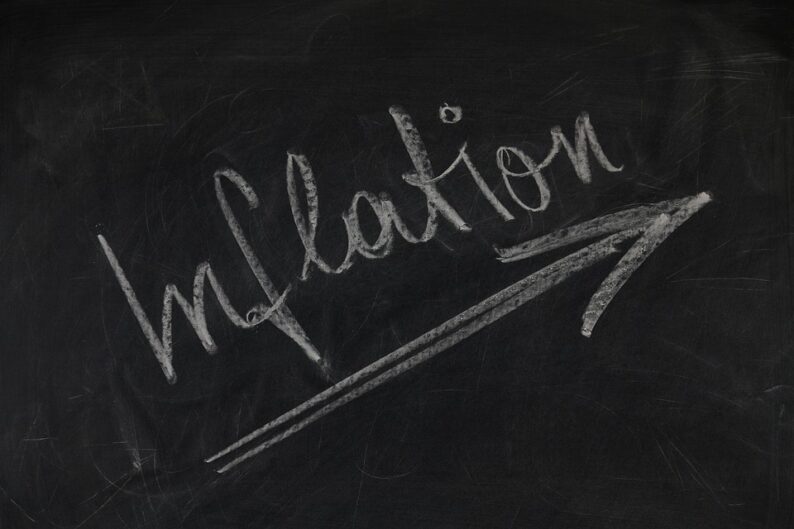 Image Source: Pixabay
Image Source: Pixabay
I have been editing sections of my manuscript, and nothing out of that writing output is publishable here (since it is just a rehash of an earlier article). However, I am adding a new section on inflation theories that I will need to think about. This article summarises what I think I will cover.My manuscript is somewhat unusual in that I am mainly discussing the “known properties” of inflation, without offering a theory of inflation. The more usual situation is that people have extremely strong views on what explains inflation (and more often than not, these views contradict “known properties” of inflation). I decided to not cover inflation theories on the basis that it somewhat difficult to get good introductory information due to the huge mass of disinformation. By avoiding theory, the manuscript statements are relatively safe to make, and so my manuscript itself hopefully stays out of the “disinformation” category.Note that when I refer to “inflation theory” I mean “a means to predict future inflation rates” and not things like “how to calculate inflation?” or “what are the side effects of inflation?” Furthermore, when I refer to “inflation” I have the annual rate of change of CPI (or equivalent) in mind.I split “inflation theories” into two categories:
attempting to explain the inflation aggregates with aggregated economic time series (unemployment, money supply, etc.); and
attempting to model the components of the CPI index on a component-by-component basis.
(The two categories blur somewhat if the analyst throws out part of the CPI basket, and does something like just try to predict core CPI.)
Aggregated Models
There is a great variety of aggregated models, but they tend to be based on a few common themes. The ones that I see most often are in the following categories.
If we were to approach economics like the physical sciences, we would simply evaluate the quantitative outputs of the models on a quantitative basis. Of course, that is not what ends up happening. In practice, the quantitative models stink or else are “proprietary” and outsiders have no idea where the alleged model output comes from. But, many of the models are part of rigid world views (most notably, anyone who looks at money growth), and so there is a continuous effort to add epicycles or redefine reality to get the preferred model to “work.”The closest to somewhat successful quantitative predictions of inflation come from central bank staffs. However, despite pretty much everyone involved being highly invested in quantitative economic modelling, their forecasts are not normally generated by a single model — it is a large effort with a lot of different models. And in the cases where they use a “single model” there tends to be a lot of fudging around with the model parameters to steer it in the desired direction.
Anything Involving Inflation Expectations
A lot of theories/models involve “inflation expectations”, but I cannot recall the economist fraternity being concerned with some rather obvious problems with using them to predict inflation. Since most of us are not the representative household in a neoclassical model, we do not know the level of “inflation expectations” in the economy. Rather, we are stuck with inflation surveys. There are two main types.
Surveys of households. These surveys tend to pick up gasoline spikes and whether inflation has made more coverage in the financial press.
Surveys of forecasters/economists. The problem with using this measure is: where exactly are the forecasters getting their forecasts from? Why not use whatever that source is to forecast inflation? It also raises the thorny problem: why wouldn’t forecasters at least occasionally be able to forecast inflation (normally classified as a lagging economic indicator) reasonably well? If inflation forecasts have no predictive value whatsoever, why are these forecasters still employed?
Meanwhile, we run into another conundrum: even if inflation expectations is a major driver of inflation, we have just changed the forecasting exercise from predicting inflation to predicting inflation expectations. Is that really an advance?
Non-Aggregated Theories
My preference is for non-aggregated inflation modelling, but the general approach has drawbacks. It is not academically respected for a number of reasons — and I would agree with the negative assessment if I somehow found myself as an economics academic. (Luckily, I am ex-control systems academic.) There are too many ways of knitting models together, and so it is very hard to test them. There is also the question of components not being internally consistent. However, one major complaint would be that they are not tied to a favoured modelling strategy, like neoclassical DSGE models.These models are not going to favoured by many producers of economic/financial commentary because they cannot fit their hobby horses (“money printing!”) into them. At most, you can have people who are mad about some part of the economy — like house prices — can just talk about that component, and they do not care about the rest of the CPI.
Concluding Remarks
We can often guess what is going to happen to the inflation rate based on events. For example, it was not hard to see that there would be a rise in prices as a result of the pandemic restrictions matched with fiscal income support measures. The issue is being able to confidently make quantitative predictions. The confidence of forecasters generally outstrips the quality of models.More By This Author:“Paying For Two Wars”
Slopes And Recession Probabilities
The “Economists Monkeying With The CPI” Debate












Leave A Comment